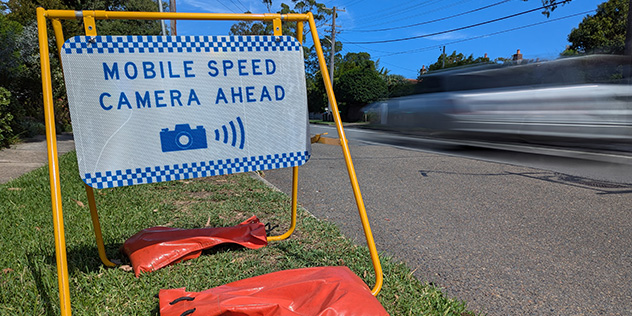How does an average speed camera work?

Speed monitoring and policing on Australian roads is nothing new, but with the planned roll-out of average speed cameras for cars and not just heavy vehicles, it’s worth learning a thing or two about how the technology works and how it differs from more traditional speed detection devices.
How do speed cameras work?
No matter the style of speed detection device – be it fixed camera, radar or average speed – they all rely on the same principle: speed equals distance over time.
Put simply, the faster a vehicle is moving, the less time it will take to cover a distance. Through use of various technologies, all speed cameras and detection devices measure how much time a vehicle has taken to cover a distance, then use that to calculate its speed.
So, what is an average speed camera?
Average speed cameras rely on two cameras, set at predetermined distances from each other, that record the number plate of a passing vehicle.
Unlike fixed or radar-based speed cameras, which can measure speed over mere metres, average speed cameras calculate speed over much longer stretches of road.
For instance, the two average speed camera locations set to be trialled in NSW this year (on the Pacific Highway between Kew and Lake Innes, and the Hume Highway between Coolac and Gundagai), measure across distances of 15km and 16km respectively.
By assessing the time taken between a vehicle passing the first and second camera, and using the principle mentioned above, a vehicle’s average speed can be calculated.

How does a fixed speed camera work?
A fixed speed camera is only used to capture details of a vehicle already deemed to have exceeded the speed limit. This is calculated via two electronic sensors set into the road’s surface, with a pre-determined distance between, which register when a vehicle has passed over them.
The faster a vehicle is travelling, the less time elapses between the two sensors being triggered, and this can be used to accurately determine speed.
How does radar speed detection work?
Radar speed detection uses radar technology to determine the distance between itself and another object.
In this application, the device takes multiple measurements of how far away a vehicle is and, applying the principle mentioned earlier, uses these to determine the vehicle’s speed.
The benefit of radar speed detection is in its portability. Radar speed detection does not require fixed locations for cameras or in-road sensors, allowing mobile speed cameras and highway patrol officers to change locations freely and still be able to monitor speed.






